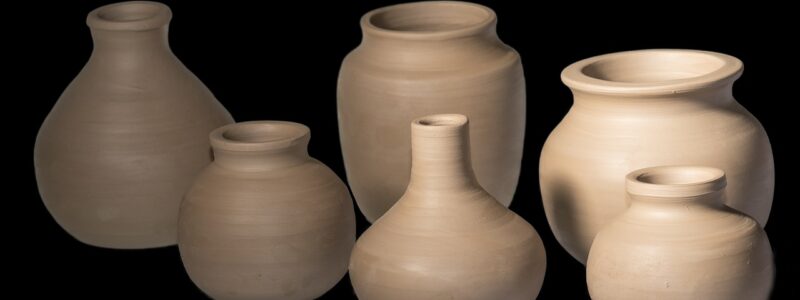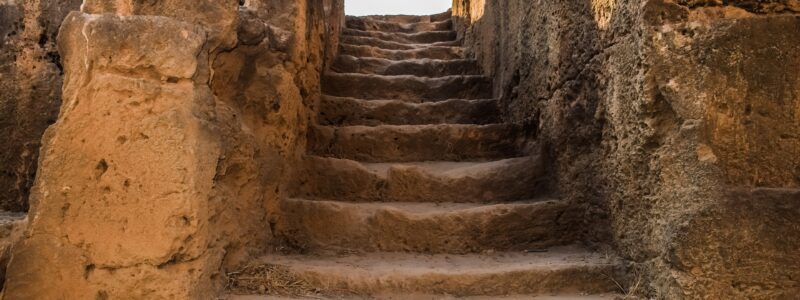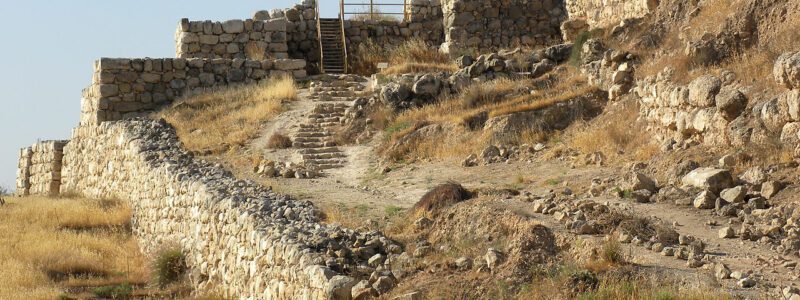Ahab in the Bible
Liberal scholarship over the past century placed doubt on whether the ancient Jewish kings such as Ahab in the Bible really existed. Many believe they were just myths perpetuated by Jewish writers centuries later in order to promote a glorious past history.
Fortunately for those promoting the accuracy of the Bible, such scholarship is being proven wrong with each passing year. We now have firm archaeological evidence for the existence of King David, Isaiah, Josiah, Jeremiah, among many other Biblical characters.
The historicity of the Biblical narrative is being demonstrated every day with new findings from the archaeological field.
Not only have liberal scholars doubted the historicity of many Biblical characters, but they also doubt the narrative itself. Many propose ancient Israel to be little more than a loosely knit group of trial warriors fighting amongst themselves who control little territory.
They argue these tribes centered around Jerusalem but certainly did not control land including the Negev and up to modern-day Syria.
Some of this argument relates to modern politics and the wish to deny modern Jews an ancient claim to the land. Others wish merely to denigrate Scripture and its claim for an all-powerful God.
Whatever the underlying cause for Biblical skepticism, new archaeological findings continue to establish the historicity of Scripture.
Ancient Hebrew Inscription Found

An archaeological site – Image by Dimitris Vetsikas from Pixabay
Tel Beth Maacah is an archaeological site in northern Israel, north of Bethsaida and Tel Hazor. Most Biblical historians believed this territory was controlled by Syrians during the ninth-century BC – the time of King Ahab.
We now have good reason to believe in the historicity of Jezebel as a bulla bearing her name has been discovered. But the northern extent of the territory belonging to the Davidic kingdom has been a point of significant scholarly contention.
A jar recently discovered at a dig site at Tel Beth Macaah may help to resolve this issue. A Hebrew inscription reading “belonging to Benaiyo” has been uncovered dating to the ninth century BC. Since Banaiyo was an Israelite name, it strongly suggests – although it does not absolutely prove – that this city was Jewish at the time Ahab was an Israelite king.
A Historical Israel Site
The Northern Kingdom was frequently fighting its neighbors as argued over their land. The city is in the area where ancient Israel, Aram (Syria) and Phoenicia meet.
The city is mentioned in Scripture in 2 Samuel 20. In this chapter, Sheba ben Bichri flees to the city seeking refuge from one of David’s generals. While the general is seeking to build a siege ramp against the city wall in order to extricate Sheba he is met by “a wise woman” of the city asking why they are starting a siege.

A “Wise Woman” – Image by Gerd Altmann from Pixabay
This “wise woman” from the city then asked,
They used to say in the old days, ‘Let them inquire at Abel’; and so they would settle a matter. I am one of those who are peaceable and faithful in Israel; you seek to destroy a city that is a mother in Israel; why will you swallow the heritage of the Lord?
Upon hearing about Sheba and that he was carrying on an insurrection against King David, the city captures Sheba and throw his head over the wall into the waiting arms of David’s general. The army then left the city along and went back to their own tribes in southern Israel.
A Historic Aram Site
Abel is located on the border between Aram (Syria) and Israel with control of the city passing back and forth between then. The city was important in ancient times due to commerce as it was in a trading route among three civilizations: Israel, Aram, and Phoenicia.
In 2 Samuel 10:6-8, Abel is associated with the Aramaeans,
When the Ammonites saw that they had become odious to David, the Ammonites sent and hired the Arameans of Beth-Rehab and the Arameans of Zobah, twenty thousand foot soldiers, as well as the King of Maacah, one thousand men, and the men of Tob, twelve thousand men. The Ammonites came out and drew up in battle away at the entrance of the gate; but the Arameans of Zobah and of Rehab, and the men of Tob and Maacah, were by themselves in the open country.
This narrative makes sense in the context of 1 Kings 15:20 where Abel Beth-Maacah is among the cities conquered by the Aramaean King Ben Hadad, in the early 9th century.
Silver Hoard from Abel Beth Maacah
Abel was at the crossroads between several civilizations – the Israeli, Aram, and Phoenicians. It likely was very rich as it shared in the business ventures of goods and services bought and sold among these diverse peoples.
It should not be too surprising finding one of the largest silver hoards ever found in Canaan in the city of Abel. Excavations of this site have been ongoing since 2013 under the direction of an archaeological team.
A mostly complete ceramic jug found in that location which dated to the 13th century BC. In this jug was a silver hoard fused together by corrosion. Miriam Lavi separated these artifacts under the direction of the Conservation Lab of the Institute of Archaeology of the Hebrew University of Jerusalem.
Twelve silver pieces including earrings, a silver ingot, and a fragment of hacksilver. In ancient civilizations, pieces of silver known as hacksilver were used as currency. Thhttps://my.wealthyaffiliate.com/content/edit/547673#is is explained by the archaeologists
“The last two items were especially intriguing, as they potentially represent two important aspects of silver hoards in antiquity: the manufacture of silver items from ingots made by pouring molten silver onto a flat surface and then cutting the silver into pieces, so it could be used as a means of payment in the pre-coinage economy that existed in Canaan at that time
The “Wise Woman” of Abel Beth Maacah
The forces of King David were met by a “wise woman” when they attempted to lay siege to the city. The wife woman intervened and secured the head of a refugee from King David in order to avoid a catastrophe for the city.
But who is this “wise woman”?
The Bible mentions two wise women: The Wise Woman of Tekoa (2 Samuel 14) and the Wise Woman of Abel Beth Maaca (2 Samuel 20). Both of these women appear in stories connected to the reign of King David.
These women have authority in their towns and act wisely in order to avoid calamity for their respective cities.
At Tel Abel Beth Maacah, archaeologists may be able to provide some context concerning one of these wise women. They found several rooms in the city with cultic paraphernalia dating to the early tenth century BC.
They found a jar containing 425 astragali (ankle bones) of various animals including goats, sheep, and deer. Such bones have been found throughout the ancient Middle East and Mediterranean world which may have been game pieces or used in ritual activities. Archaeologists explain,
They may have been used as game pieces, or they may have been used in ritual activities, such as divination, as well as in political advisory.
This seems to fit well with the city being a center or oracular wisdom, or a place visited by people trying to have their questions answered. The authors note,
Interestingly, wise women (sometimes termed “old women” are also mentioned in Late Bronze Age (1550-1200 BC) Hittite texts as ritual experts who operated based on folk knowledge, practicing a range of divinatory and magical tasks, which included fertility rites, healing, and protection against plague or other misfortunes.
Summary
The Bible again demonstrates the presence of ancient Kings of Israel consistent with recent archaeological findings.
King Ahab was once considered a mythological invention by Jewish historians anxious to glorify their inglorious past. Now it seems like their past might well have been glorious indeed.





